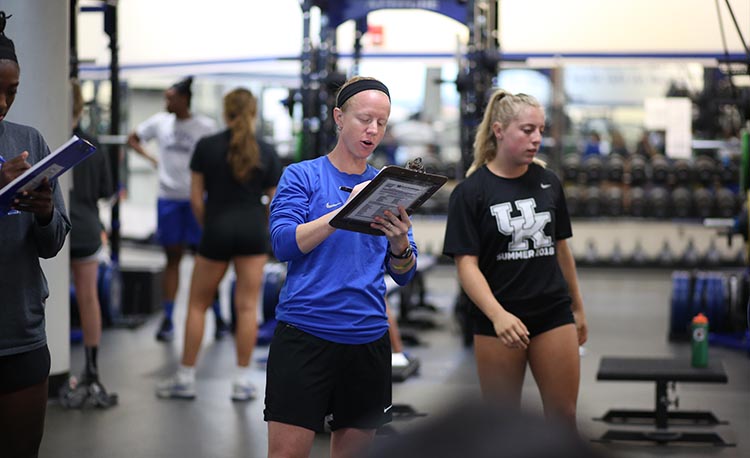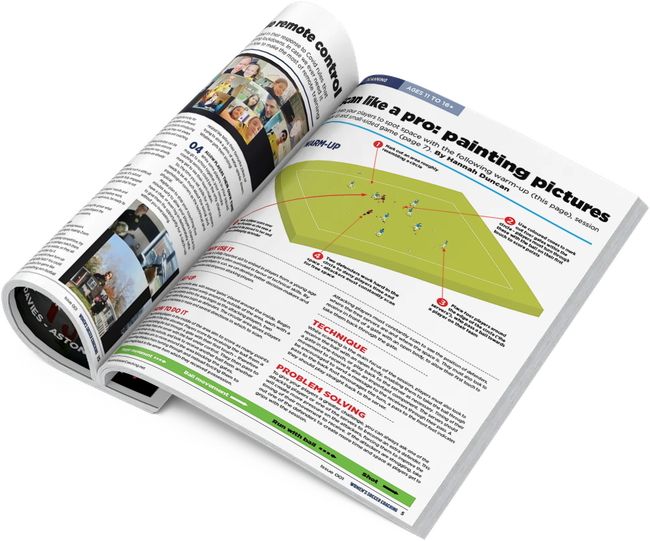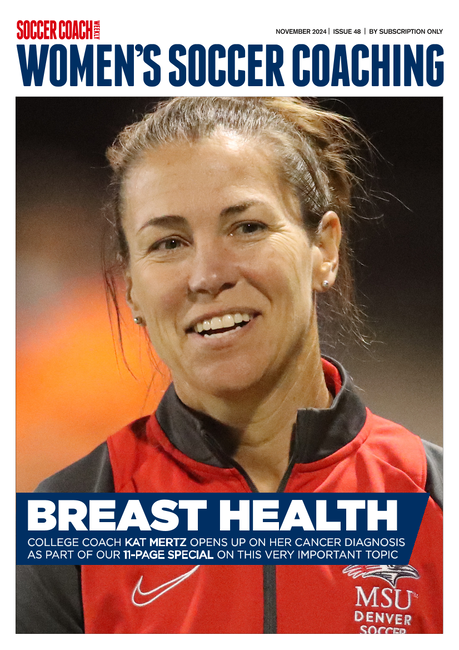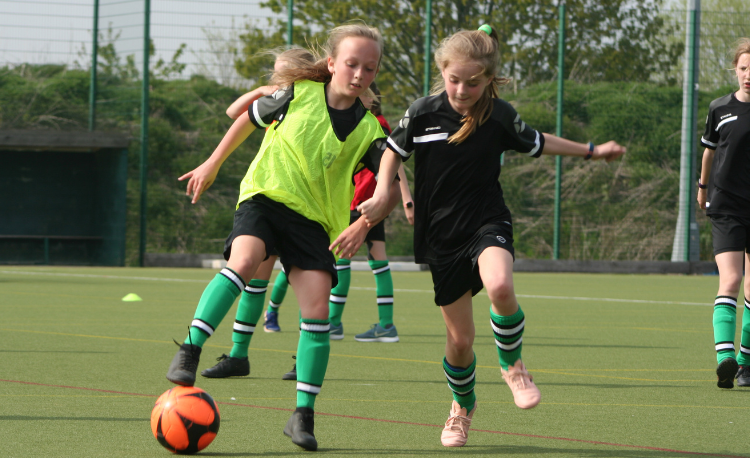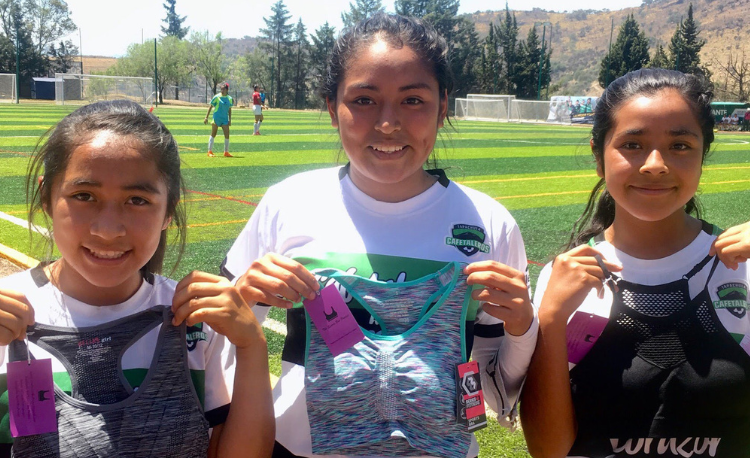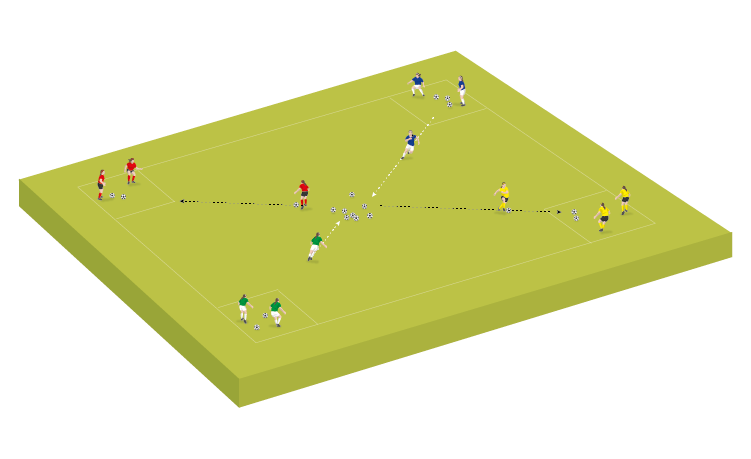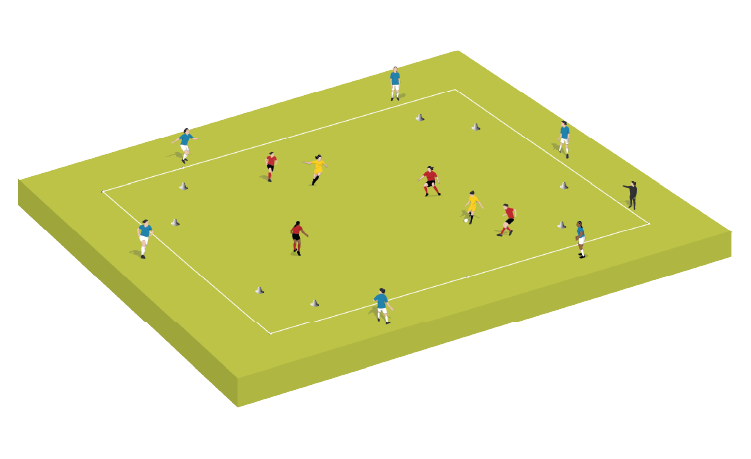You are viewing
1 of your 3 free articles
Strength in numbers
Strength and conditioning training has become a must, even for non-elite teams. S&C coach JEANNE RANKIN explains why it is particularly important for women.
There is a wealth of information floating around about whether strength training is beneficial or harmful to soccer players.
I have heard it all from players and coaches over the years – ‘It will make us bulky and muscle-bound’; ‘it will make us slower’; ‘it will make us too tired for training and matches’; ‘it will make us sore and more likely to get injured’; ‘it will make us less flexible and mobile’; ‘we do not have time in the schedule for it’; ‘no-one understands the demands of soccer well enough’.
Some of these things could be true if you do not have a qualified strength and conditioning (S&C) professional working with your team – but it is generally quite the opposite if you have a well-rounded and collaborative approach.
The use of S&C with US college athletes really started with Boyd Epley at the University of Nebraska, whose American Football team was looking for a winning formula after a few mediocre seasons.
They employed Epley, who made their men bigger, faster, stronger, more agile and able to last longer, and the program completely turned around.
For those who believe muscle equates to being slower, look no further than the many American Football players who add 15-50lbs of weight during their freshman year of college and get faster.
Research indicates that increased muscle cross-sectional area equates to greater strength, and greater strength lays the groundwork for increased power.
"My main goal is to reduce risk of injury; my second is to improve athleticism..."
Additional benefits include increased range of motion and flexibility, being less prone to injury and quicker recovery.
Contrary to some belief, going through full range of motion movements in the weight room reinforces mobility and flexibility. More muscle around joints helps to stabilize them, which decreases the chance of injury.
Lastly, research supports the idea that increased strength helps with the body’s ability to recover quicker, which can be quite important in a sport like soccer.
When I am writing S&C programs for my teams, my main goal is to reduce injury risk. My secondary goal is to improve athleticism.
It is often the case that these go hand-in-hand, but it is always important to prioritize your goals.
The most common injuries in soccer occur in the knee, ankle, hamstrings, groins and head. While every athlete is unique, female players face a few different issues with injuries than males – women are more likely to suffer anterior cruciate ligament (ACL) tears, for example.
Let’s use the knee joint as an example of special considerations we should take into account while assessing injuries.
Women tend to have greater joint laxity than men. In the knee, this often comes in the form of hyperextension; a knee that hyperextends is more likely to be injured if the surrounding muscles are not strong enough to keep the joint from hyperextending during play.
Females tend to have a greater ‘Q’-angle at their hip, which creates more knee valgus (the knee joint is more likely to point inward in females than males).
This greater angle can be a contributing factor to instability and added stress at the knee. If not counteracted by strong glute, hip and hamstring muscles, a female athlete may be more likely to suffer an injury than her male counterpart.
Females have more hormonal fluctuations than males because of menstrual cycles. Research has shown that ACL injuries occur more often in the ovulatory phase – some 14 days before a woman starts her period – than any other phase of the cycle.
This topic has been taboo for thousands of years and we are just beginning to see more research emerge in this area. Furthermore, every woman experiences different symptoms, so there will always be unique challenges faced by each individual.
I am a firm believer that the more we talk about this topic, the more we will learn how to use the research to get the best outcomes for our female athletes.
Women also tend to have higher body fat, and lower muscle mass, than males, as it is essential to a female’s ability to have a menstrual cycle and support reproduction.
Higher body fat translates to more weight that does not necessarily help with athletic performance.
On the flip side, lower muscle mass means females tend to be weaker than males when compared to overall body weight – in other words, relative strength tends to be lower in women than in men.
The good news is that any good strength and conditioning coach can write and implement a program that will help counteract these issues.
All of my soccer athletes squat, lunge, and do glute/hamstring strengthening, but I pay special attention to making sure my female players get an appropriate level of hip, hamstring and glute strength, especially the ones who have a history of lower-body injury.
A good strength and conditioning program will help decrease the likelihood of injury, which means coaches will have more players available to put onto the field week in, week out.
What if you want to take your S&C program to the next level by having your player lift? Again, a quality S&C coach will know what to add to the program to achieve these goals.
In the weight room, I add things such as Olympic lifts (clean, snatch and jerk variations), box jumps, and weighted jumps. On the field, I incorporate speed drills/mechanics such as hill/resisted sprints, reactionary starts, and proper acceleration angles.
6 STEPS FOR WRITING A S&C PROGRAM GEARED TOWARDS INJURY REDUCTION
- Identify common injuries for the sport: Additionally, does your team experience any of these at a higher level than other teams? Or does it experience any uncommon injuries?
- Identify WHY these injuries are common: If you can identify the ’why’, then it will help you figure out how to solve the underlying issue.
- List muscle groups and/or movements that need work on a weekly basis: This will help reduce the likelihood of injury. Prioritize what is most important to your team.
- Design a template to add structure to your S&C programs: For example, maybe do squats/lunges earlier in the week (further away from game day) and balance/ proprioceptive work later in the week (closer to game day).
- Have a bank of regressions and progressions: This ensures athletes of different levels can perform movements that match their abilities.
- Have a plan in place, but also allow for agile periodization: Because things will always come up that force us to change our plan a bit. Pre-teen athletes should focus on having fun and learning basic athletic movements. Things like playing tag and jumping rope are great for this age.
Related Files
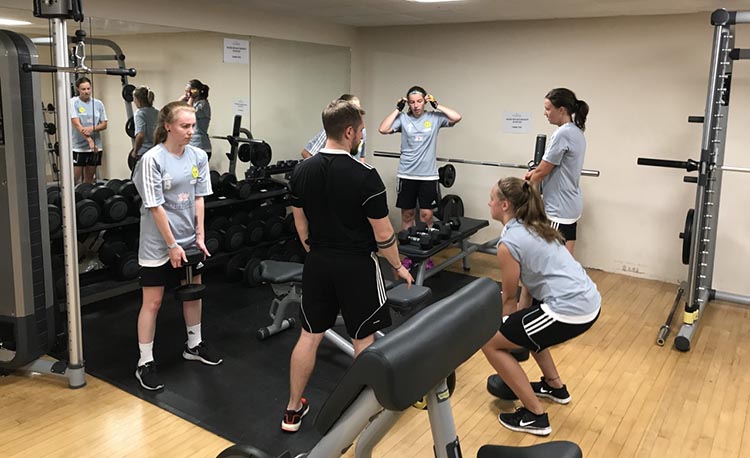
3 STEPS FOR WRITING An S&C PROGRAM GEARED towards boosting athletic performance
- Identify Key Performance Indicators (KPIs): What makes a good soccer athlete on your team? Some examples are a high aerobic capacity, quick acceleration, agility, high soccer IQ and ability to hit a long ball.
- Decide how to assess/evaluate these KPIs: For example, what does it mean when you say to your team: “You need to be fit"?. You must have some sort of metric that tells you whether an athlete is “fit” or not, such as meeting a minimum score on some sort of aerobic-based test.
- Decide how to enhance each athlete’s KPIs: Refer to Steps 3-6 on page 6 – prioritize what you need to do every week, design a template, have regressions/progressions and have a general plan in place.
While it is never too early to start some sort of strength training, the emphasis of the program should change as an athlete ages.
Pre-teen athletes should focus on having fun and learning basic athletic movements. Things like playing tag and jumping rope are great for this age.
Teenagers (both male and female) tend to lack quality coordination, so it is a great time to learn how to properly perform basic movements like squatting, lunging, hinging at the hips, push-ups, and proper landing/jumping mechanics.
I have found that doing isometric holds (holding at the bottom of a squat for 10 seconds) and tempo work (taking five seconds to reach the bottom of a squat) are a great way to teach young athletes the correct body positions during a movement.
Not until an athlete has shown she can consistently perform movements correctly without weight should you introduce an external load.
Once she is able to load movements, an athlete will really see the athletic performance benefits of a quality strength training program.
In summary, a good S&C program is beneficial to soccer athletes, not only to help reduce injuries, but also to increase overall athleticism. Female athletes face some different obstacles than their male counterparts, but a quality S&C coach can help with these differences.
Just as I am not qualified to write a good training plan for a soccer team, soccer coaches are not qualified to write a good S&C plan for a soccer team.
Make sure you do your research when looking for a S&C coach, and bring someone in who is certified through an organization such as the NSCA or CSCCa in the US, or the UKSCA in Britain.
Jeanne is a strength and conditioning coach. Any advice is hers alone, based on her expertise and experience. Care should always be taken when doing any exercise to avoid unnecessary strain or injury, including a thorough warm-up and cool down.
Newsletter Sign Up
Newsletter Sign Up
Discover the simple way to become a more effective, more successful soccer coach
In a recent survey 89% of subscribers said Women's Soccer Coaching makes them more confident, 91% said Women's Soccer Coaching makes them a more effective coach and 93% said Women's Soccer Coaching makes them more inspired.
*includes 3 coaching manuals
Get Inspired
All the latest techniques and approaches
Women's Soccer Coaching offers proven and easy to use soccer drills, coaching sessions, practice plans, small-sided games, warm-ups, training tips and advice.
We've been at the cutting edge of soccer coaching since we launched Soccer Coach Weekly in 2007, creating resources for the grassroots youth coach, following best practice from around the world and insights from the professional game.

